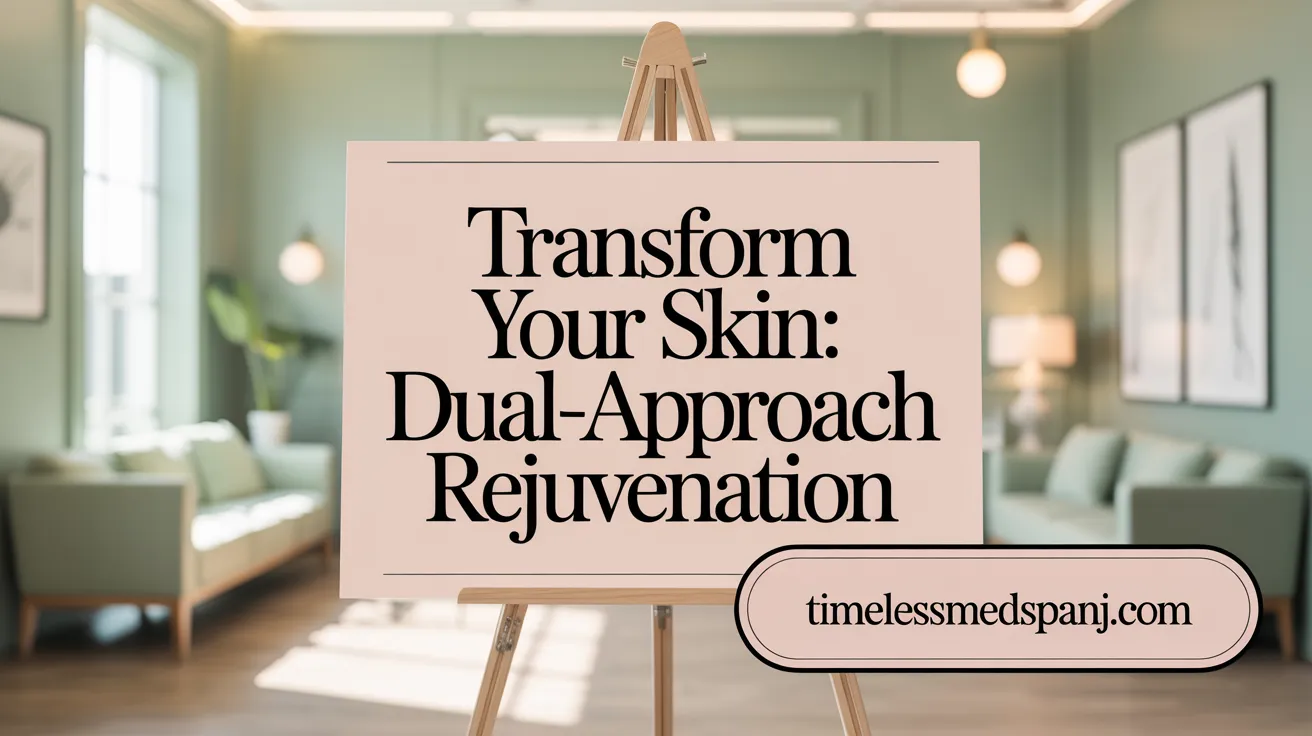Introduction to Combined Laser and IPL Treatments
Combining laser and IPL treatments presents a breakthrough approach in cosmetic dermatology, offering comprehensive skin rejuvenation by simultaneously targeting multiple skin concerns. Drawing on the strengths of each technology, these combined therapies promote collagen production, improve skin texture, and address both surface-level and deeper skin issues. This article explores the distinct benefits of integrating laser and IPL treatments for optimal skin health, ensuring a smoother, healthier, and more radiant complexion.
Key Facts on IPL and Laser Skin Rejuvenation Techniques
- IPL uses broad-spectrum light targeting surface-level pigmentation and vascular issues like rosacea.
- Laser treatments use focused wavelengths to address deeper wrinkles, scars, and stimulate collagen.
- Combining IPL and laser treatments allows multi-depth skin problem addressing, resulting in smoother and even skin tone.
- Synergistic benefits include enhanced collagen production, improved skin firmness, and longer-lasting results.
- The combination reduces the number of sessions and downtime, offering a more convenient and effective rejuvenation.
- Commonly combined laser types include Ablative CO2, Erbium, Nd:YAG, fractional, Genesis, and PicoTone.
- These combined treatments are generally safe if performed under expert supervision, suited for most skin types with careful assessment.
- Clinical results are optimized with maintenance protocols such as regular follow-ups, sun protection, and skincare routines.
- Advances in non-ablative and fractional laser technologies minimize healing time and discomfort.
- An integrated approach of IPL and laser provides comprehensive skin rejuvenation, addressing both aesthetic concerns and skin health.
1. Comprehensive Skin Rejuvenation Through IPL and Laser Combination

How do laser and IPL treatments work individually and together?
IPL (Intense Pulsed Light) treatments use broad-spectrum light to target surface-level skin issues such as pigmentation, sun damage, and vascular concerns like spider veins and rosacea. The light energy heats melanin and hemoglobin, which helps dissolve dark spots and collapse unwanted blood vessels, improving overall skin tone and reducing redness.
Laser treatments work differently by using a focused, single wavelength of light. These can be ablative lasers, which remove outer skin layers to address deeper wrinkles and scars, or non-ablative lasers, which penetrate the skin without damaging the surface but still stimulate collagen production in the dermis. This collagen boost enhances skin texture, firmness, and elasticity.
Combined, IPL and laser treatments complement each other by tackling skin problems at multiple depths. IPL provides broad, gentle treatment for pigment and vascular issues on the skin's surface, while lasers precisely address textural and structural concerns deeper within. This synergy results in smoother, more even-toned, and rejuvenated skin.
What are the skin concerns addressed by each treatment?
-
IPL Treatment Targets:
- Sun damage such as age spots and sunspots (IPL photofacial benefits)
- Vascular issues like spider veins and rosacea (IPL for vascular disorders)
- Pigmentation irregularities including freckles and melasma (Benefits of IPL treatments)
- Redness and broken capillaries
- Early signs of aging such as fine lines and dull skin
-
Laser Treatment Targets:
- Deeper wrinkles and fine lines (Laser skin resurfacing benefits)
- Acne and surgical scars (Laser treatments for acne scars)
- Uneven skin texture and enlarged pores
- Skin tightening and elasticity improvement (Laser treatment for collagen production)
- More persistent pigmentation and vascular lesions
Together, these treatments can address multiple coexisting skin issues in one comprehensive plan.
What are the synergistic benefits of combining IPL and laser treatments?
When used jointly, IPL and laser therapies boost each other's effectiveness. The combination stimulates more collagen production than either treatment alone, aiding in skin tightening and wrinkle reduction (Collagen stimulation with IPL and laser).
By focusing on different skin layers simultaneously, the treatments provide a holistic rejuvenation that improves both tone and texture.
Additional benefits include:
- Enhanced reduction in pigmentation and vascular lesions
- Improved skin firmness and smoothness
- Minimizing visible signs of aging such as fine lines and redness
- Optimize skin health by promoting cellular turnover
This synergistic effect often leads to more dramatic and longer-lasting results (Benefits of combining IPL and laser).
How do combination treatments improve efficiency and reduce downtime?
Because IPL addresses superficial issues and lasers target deeper structures, combining the two can reduce the number of sessions needed compared to performing each separately. Patients experience quicker, more recognizable improvements (Reduced downtime with IPL and laser.
Moreover, many modern laser devices offer non-ablative or fractional options that minimize recovery time, and IPL treatments have little to no downtime (Non-ablative IPL treatments.
This combination is especially suitable for busy individuals seeking effective yet convenient skin rejuvenation strategies, often allowing them to return quickly to daily activities with minimal side effects.
Overall, pairing IPL and laser therapies delivers a powerful, efficient approach to comprehensive skin rejuvenation by safely addressing a wide range of aesthetic concerns (Comprehensive skin rejuvenation approach.
2. Advanced Treatment Protocols: IPL Paired with Laser Modalities for Enhanced Outcomes

Which laser treatments are commonly combined with IPL for skin rejuvenation?
Several types of laser treatments are commonly combined with IPL to optimize skin rejuvenation outcomes. IPL (Intense Pulsed Light therapy addresses surface-level pigmentation concerns, sun damage, and vascular issues such as spider veins and rosacea by using broad-spectrum light to target melanin and hemoglobin.
The laser treatments paired with IPL often include:
- Ablative CO2 and Erbium lasers: These lasers remove outer skin layers precisely and stimulate collagen deeply to improve wrinkles, scars, and tighter skin. CO2 lasers are notable for more dramatic results but require longer recovery, while Erbium lasers have a shorter downtime. See Types of laser treatments and ablative vs non-ablative lasers, and Laser skin resurfacing benefits and procedure.
- Non-ablative Nd:YAG lasers: Penetrate deeper into the skin with minimal surface damage, making them suitable for treating vascular lesions and are safe for darker skin tones. See Nd:YAG laser benefits and uses and Laser and IPL skin treatments overview.
- Fractional lasers: Deliver laser energy in microscopic columns to treat skin texture, fine lines, and scars with reduced healing time. See Fractional laser resurfacing and Combine laser treatments for skin renewal.
- Specialized laser therapies such as Genesis and PicoTone: Genesis stimulates collagen production to improve skin texture and tone with gentle warming and minimal downtime. PicoTone uses ultra-short pulses to break up pigmentation and enhance collagen for conditions like melasma and acne scars. See Benefits of Genesis + IPL Laser Treatments and IPL + PicoTone Laser Combo.
By combining IPL's broad spectrum approach with these lasers’ focused wavelengths, a comprehensive treatment plan addresses multiple concerns simultaneously—from pigmentation and redness to deeper wrinkles and scars—yielding more robust, longer-lasting rejuvenation. Explore more on Benefits of Combining IPL and Laser.
Is combining IPL and laser treatments safe and suitable for all skin types?
When conducted under expert professional supervision with personalized care plans, combining IPL and laser treatments is generally safe and effective for a wide range of skin types. Key safety and suitability considerations include:
- Skin type compatibility: Certain lasers like Nd:YAG and Genesis are designed to be safe for darker skin tones by bypassing melanin and reducing pigmentation risks. IPL treatments, however, tend to be more suitable for lighter skin because of potential pigmentation changes in darker tones. See IPL and laser skin rejuvenation for different skin types and Safety of IPL treatments.
- Personalized evaluation: Dermatologists assess individual skin types, existing conditions, medications, and sensitivities to tailor treatment parameters, minimizing side effects such as redness, swelling, or temporary pigment darkening. Reference Personalized IPL and laser treatment plans.
- Treatment spacing and monitoring: Sessions are spaced appropriately to allow skin recovery; clinicians monitor responses closely to adjust plans as needed. See Scheduling and treatment considerations.
- Minimizing side effects: Both IPL and laser treatments may cause mild and temporary redness, swelling, or skin sensitivity. Proper pre- and post-treatment care includes avoiding sun exposure and using soothing skin products. Learn more about Post-treatment care and risks and Skin protection recommendations.
Through thoughtful treatment planning and use of appropriate laser technologies, practitioners can safely offer combined IPL and laser therapies to meet patients' diverse skin care needs, including those with more sensitive or darker skin. See a summary of Why you need to combine IPL and laser treatments.
How do clinical results and maintenance protocols enhance treatment outcomes?
Advanced protocols combining IPL and lasers produce synergistic improvements in skin texture, tone, and overall appearance. Clinical benefits include:
- Comprehensive skin rejuvenation: IPL targets pigmentation and vascular irregularities while lasers stimulate collagen remodeling and treat deeper skin layers for fine lines, wrinkles, and scars. See Comprehensive skin resurfacing and rejuvenation approaches and Laser and light-based treatments overview.
- Improved skin texture and radiance: Patients often experience smoother, more even-toned skin with enhanced glow. Explore IPL photofacial benefits and Laser skin resurfacing for facial rejuvenation.
- Reduced treatment sessions and downtime: Combining treatments may shorten the overall course needed to achieve goals, making it convenient for busy lifestyles. See Advantages of combined IPL and laser treatments and Minimizing downtime with combined treatments.
Maintenance is crucial for sustained benefits:
- Scheduled maintenance treatments: Typically every 6 to 12 months help sustain collagen stimulation and control ongoing sun damage. Source: Typical IPL and laser maintenance schedules.
- Sun protection and skincare: Daily broad-spectrum SPF use and gentle skincare routines protect improvements. Guidelines at Protecting skin from sun and skin care tips.
- Professional follow-up: Regular assessments ensure optimal skin health and allow timely adjustments. See Importance of dermatologist monitoring and follow-up.
This strategic integration of IPL and laser treatments, supported by maintenance care, offers a powerful, personalized approach for long-lasting skin rejuvenation suitable for a broad patient demographic.
Conclusion: A Dual-Light Strategy for Radiant Skin
The fusion of IPL and laser treatments signifies a powerful advancement in aesthetic skincare, offering a multidimensional approach to skin rejuvenation. By harnessing IPL's broad-spectrum versatility and the targeted precision of various laser modalities, patients can enjoy comprehensive improvement in skin tone, texture, and elasticity with reduced sessions and downtime. This combination not only addresses myriad skin concerns—from pigmentation and vascular lesions to wrinkles and scars—but also promotes robust collagen production for durable skin health. With personalized consultation and expert care, integrating IPL and laser therapies paves the way toward achieving optimal, radiant skin.
